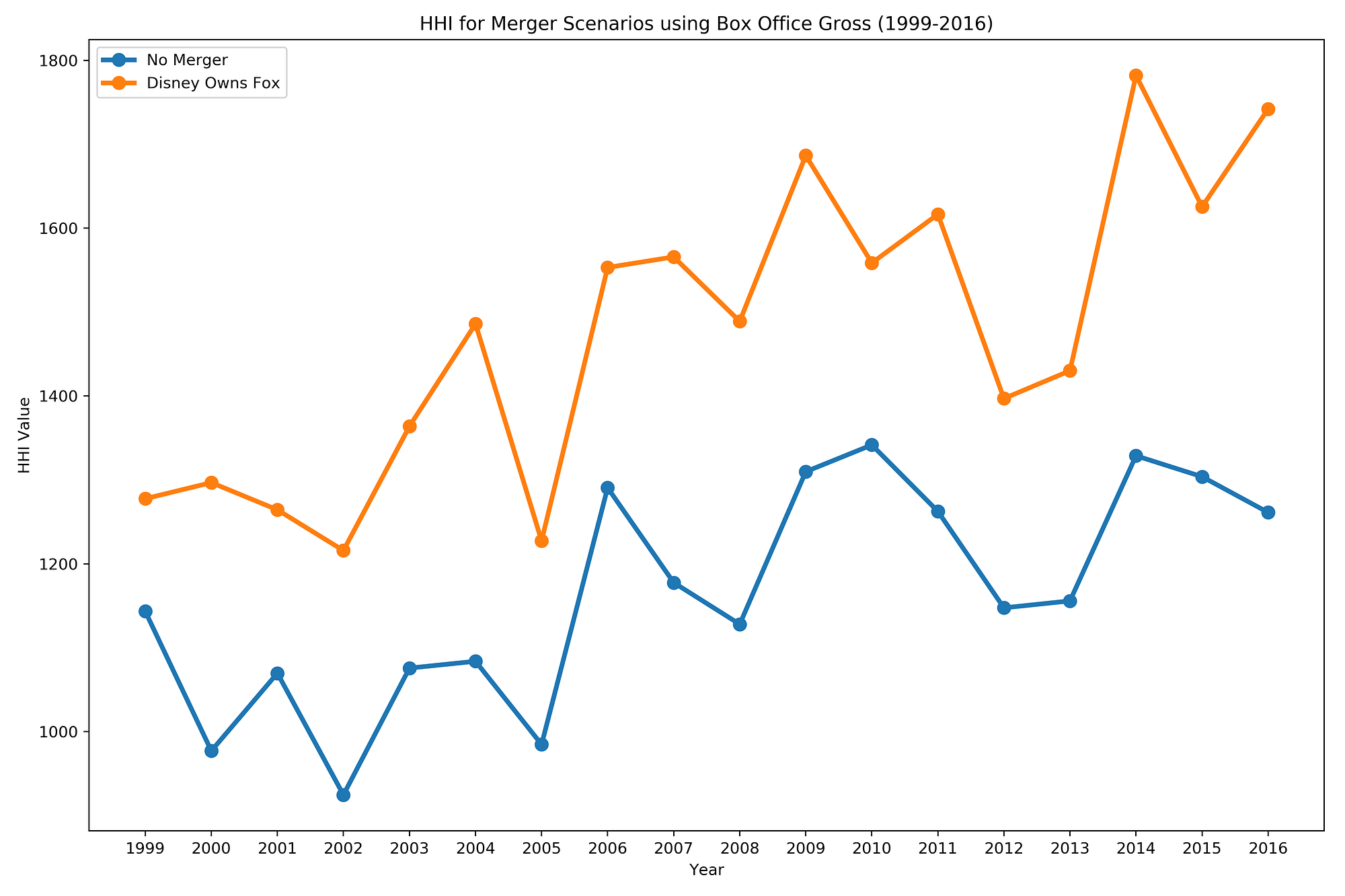Disney wants to buy Fox. This week in my micro classes we are talking about mergers and when the government (Justice Department or Federal Trade Commission) might challenge mergers.
If two firms merge, the new firm, of course, has a bigger share of the market than either of the old firms. When does this gain in market share threaten competition enough to be challenged in court?
Waldoch mentions the Herfindahl–Hirschman Index HHI. The market share of each firm in an industry is squared and then all those numbers are added up to get the HHI. There are 3 categories according to Justice:
Unconcentrated Markets: HHI below 1500
Moderately Concentrated Markets: HHI between 1500 and 2500
Highly Concentrated Markets: HHI above 2500
One thing to add is that if a merger increases the HHI by more than 100 points and the new HHI of the industry is Moderately Concentrated, then the merger is likely to be challenged.
Waldoch shows a graph of what the HHI of the movie industry would have been over several years with Disney and Fox as separate companies and with them having been merged. He does not state specific numbers, but it looks like for 2016, if the two firms had merged, it would have raised the HHI of the movie industry by 500 or so points, from about 1250 to 1750. So that would make it likely to be challenged according to the guidelines. Justice is currently reviewing it.
Here is the graph Waldoch uses:


No comments:
Post a Comment